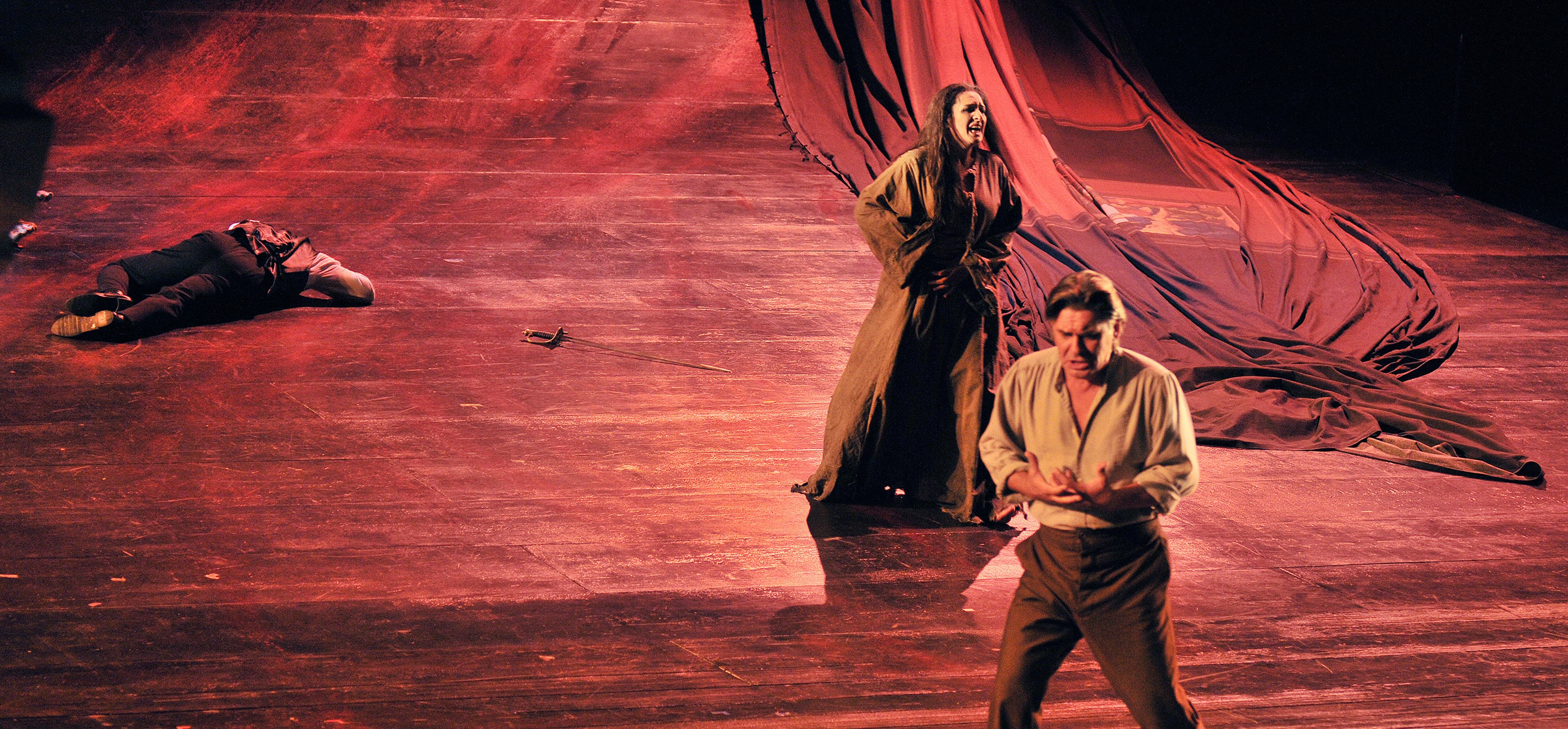
La forza del destino is one of Verdi’s so-called ‘Spanish operas’: set on the outskirts of Seville and in Italy, and inspired by the romantic drama Don Álvaro, o la fuerza del sino by Ángel de Saavedra, Duke of Rivas, it is a work dominated by the most violent passions and enveloped in a sense of fatality that culminates in an anguishing finale. Jean-Claude Auvray’s production opts for narrative clarity. The final result is a true Verdian apotheosis.
La forza del destino has earned over time—perhaps undeservedly—the reputation of being a difficult opera to follow due to its convoluted and unrealistic plot. This perception stems from the drama by the Duke of Rivas, which, true to the spirit of Romanticism to which it belongs, is characterized by an impetuous plot filled with opportune yet unbelievable twists. Verdi was captivated by the story because it was rich in passions and drastic decisions, always with the shadow of fate—that invisible thread impossible to cut—as the ultimate cause of all events. This, as Verdi rightly believed, would form the skeleton, muscles, and skin of an irresistible opera. In reality, the plot of La forza is not complicated—or at least no more than that of another great Verdi piece, Il trovatore, which is also set in Spain—though it is whimsical and dramatic. As with all things in life, paying a minimum of attention is enough to enter its irrational world and enjoy the journey to the bloody final scene.
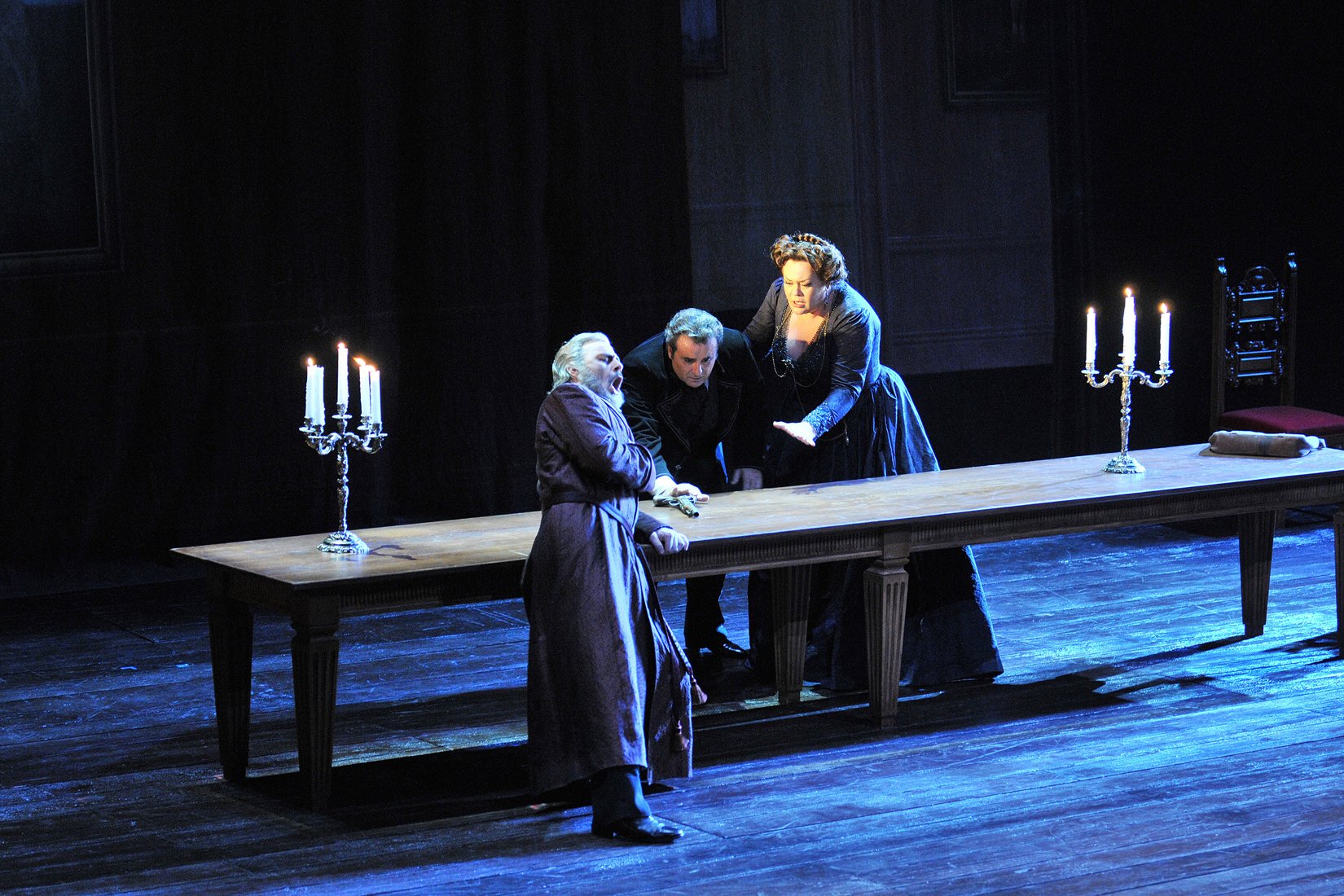
In any case, to prevent the audience from getting lost, the French director Jean-Claude Auvray structured his production of La forza del destino around clarity and simplicity. Premiering in 2011 at the Opéra de Paris, which co-produced it with the Liceu—where it was staged in the 2012-2013 season—this production has become one of the most sought-after worldwide for reviving Verdi's melodrama. It highlights all the opera's theatrical virtues while also enhancing its spectacular musical dimension.
«Aware that the plot of La forza can be challenging to follow, Auvray opts for narrative clarity to ensure that the story unfolds smoothly.»
In fact, Verdi defended La forza del destino as one of the best operas he had composed—by then, he had written over twenty—because it fully integrated drama and song, word and sound. Conscious of the work’s density, Auvray found a way to achieve the fusion that Verdi so desired.
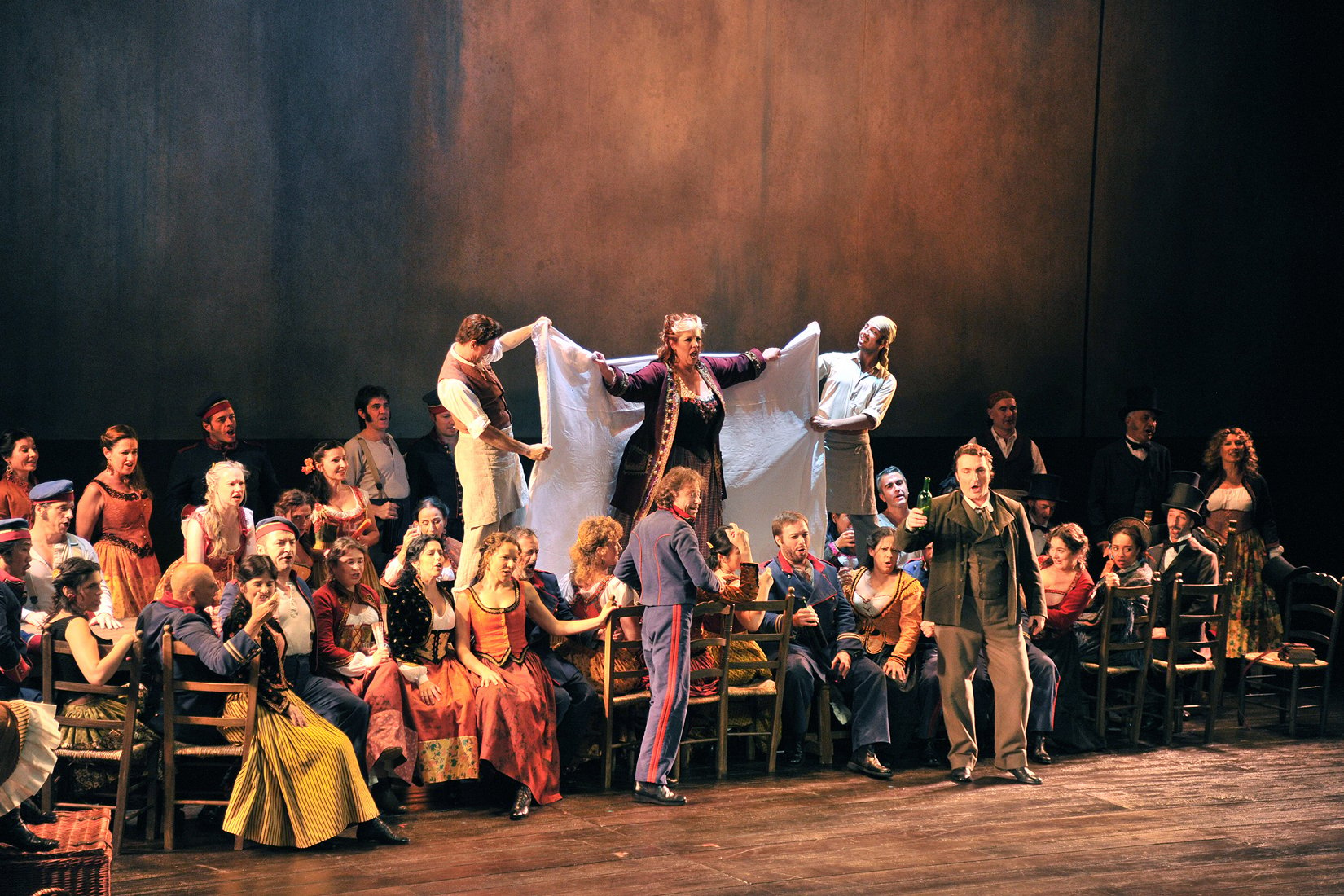
The staging remains largely faithful to the original source, though with a slight shift in time: the story of La forza del destino unfolds in the mid-18th century, while Auvray’s version moves it forward by a century, placing it in the context of Italy's unification wars. This shift is so subtle that the difference is barely noticeable: Maria Chiara Donato’s costumes could fit either period, and Alain Chambon’s set design aims primarily to remain faithful to the atmosphere—rather than the aesthetics—of a turbulent, violent time marked by constant death and war.
«The stage director uses various symbolic elements—drapes, enveloping light, and austere decor—to convey the suffocating and inevitable nature of fate.»
Auvray’s overall concept is more poetic than literal. Some details are precisely presented—such as the old noble portraits, the Vargas family’s table and chairs, the rustic cups in the inn at Hornachuelos, or the rough finish of the staffs carried by the pilgrims in the choral scenes—but what really drives the production are the settings and spaces, generally suffocating and filled with symbolism. Auvray understands that the opera’s plot requires attention, so he avoids complicating things unnecessarily.
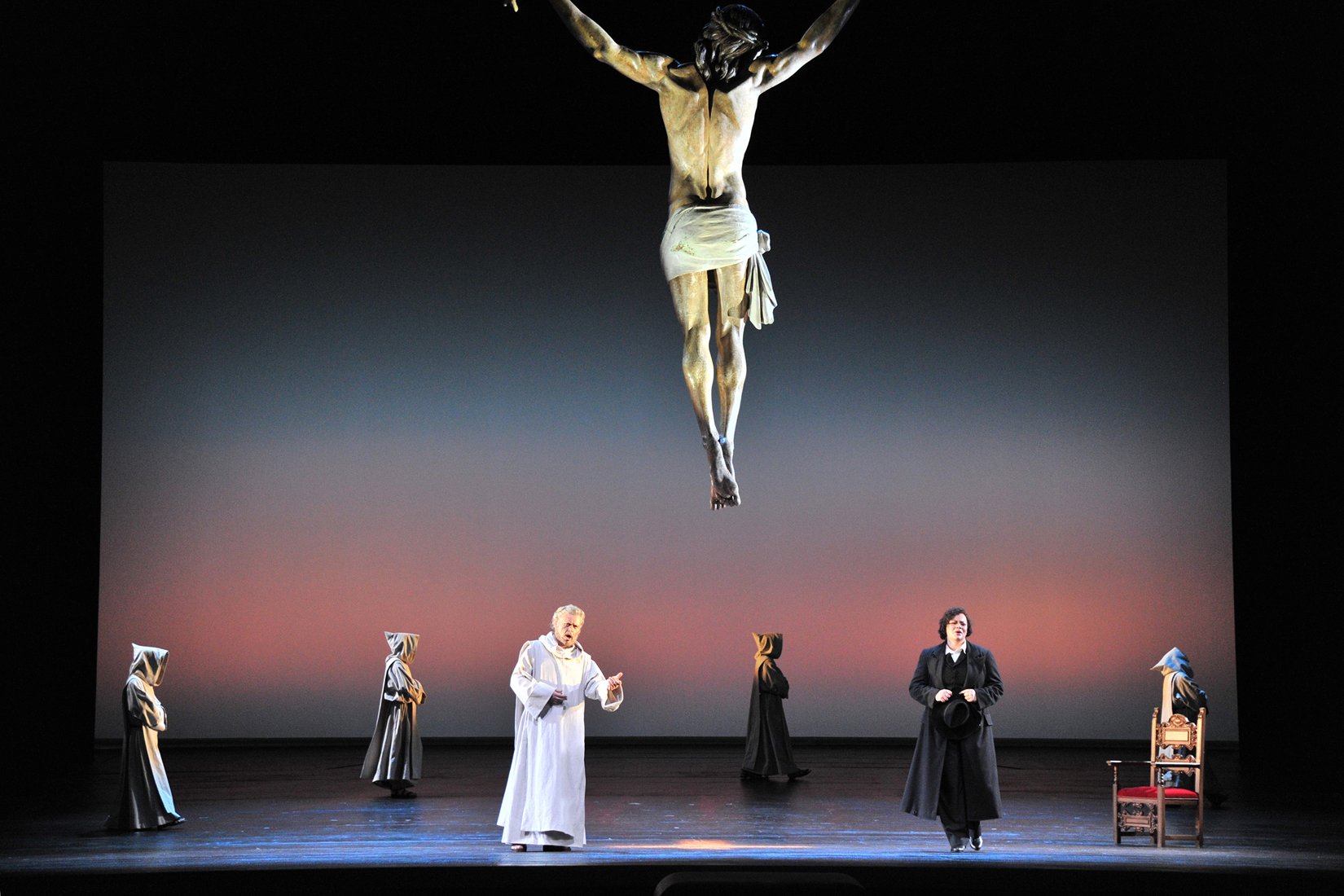
Throughout the production, several recurring and central elements give unity and strength to the staging. The first is the symbolic presence of fate: none of the characters can escape their end—whether through death or a living condemnation—and the element representing this is the frequent appearance of drapes, which physically organize the space and serve as both a direct dramatic device—such as when the Marquis of Calatrava is wrapped in a sheet and carried offstage at the end of Act 1—and a metaphor to signal a life change or the arrival of the final chapter: for example, in the fourth act, a drape on the ground in the cave where Leonora lives symbolizes the shroud in which both she and her brother will die. This metaphorical intention is also present in other elements that appear consistently on stage, such as the crucifix that dominates the end of the second and fourth acts: raised to the heavens when Leonora finds a solution to her troubles by entering a hermitage, and laid on the ground when death reaches her.
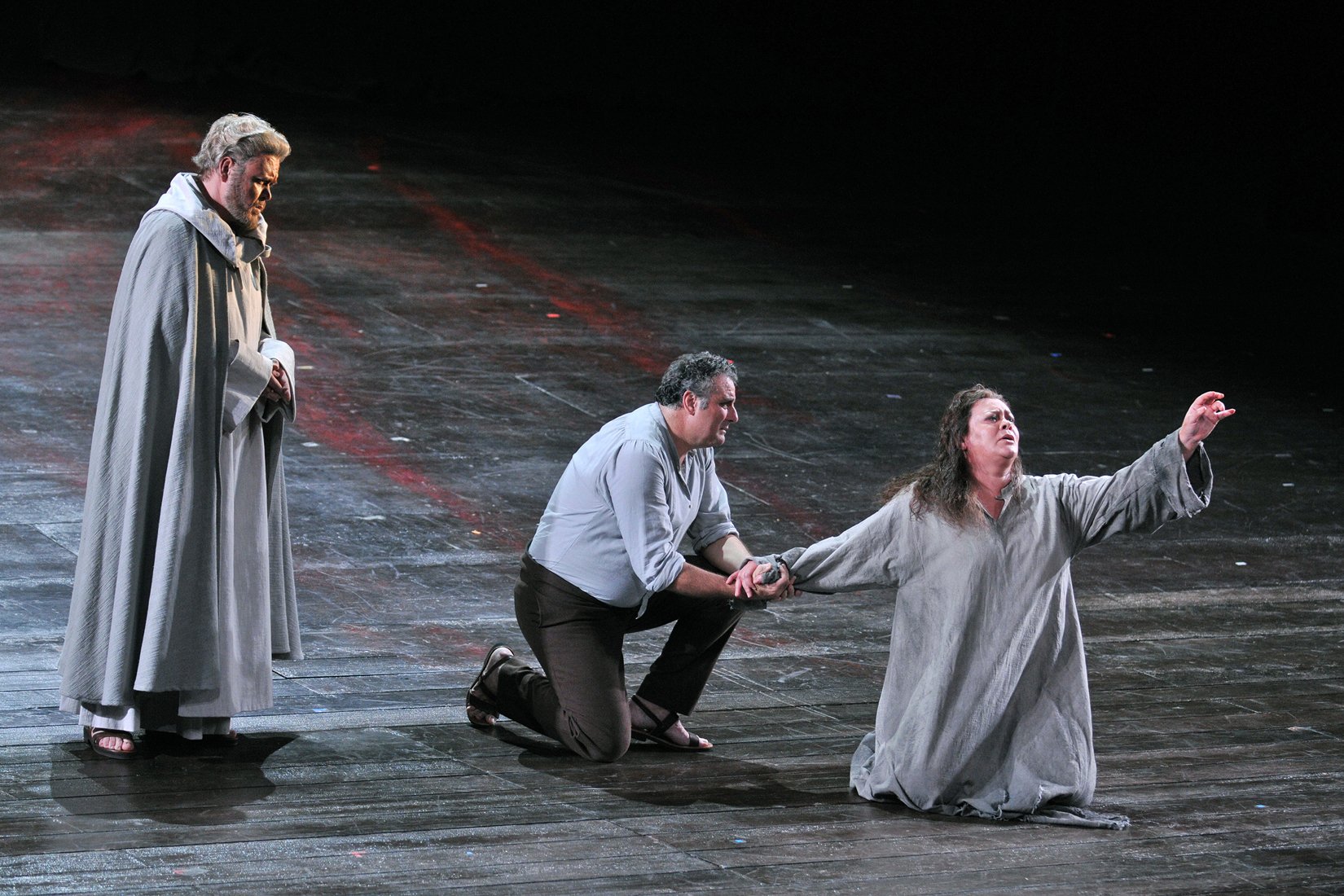
Another important feature of the opera is the constant presence of night. Not all scenes take place at night—the final scene of Act 3 is bathed in dawn’s light on the battlefield—but the overall tone of the production is dark, thanks to Laurent Castaing’s lighting design, which reinforces the poetic and symbolic interpretation sought by Auvray.
«True to Verdi's desire for complete integration of drama and music, Auvray provides enough space for the singers' voices to truly shine.»
The lighting helps to strip the stage of overwhelming sets and wrap the work in a halo that increases the sense of mystery and tension, while also providing something crucial in an opera as demanding for the singers as this one: enough space for them to deliver their best performances without unnecessary distractions. This proposal has become the international 'default' option for La forza over the past decade because it perfectly fulfills Verdi’s vision: theater in service of passionate music, and music in service of the story’s volcanic emotions.


